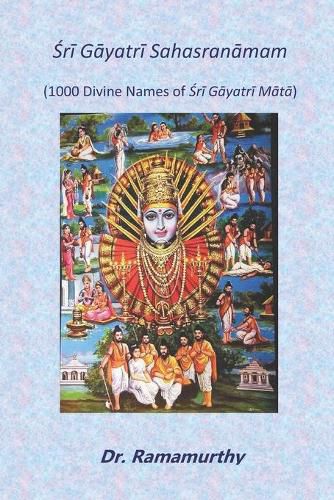Readings Newsletter
Become a Readings Member to make your shopping experience even easier.
Sign in or sign up for free!
You’re not far away from qualifying for FREE standard shipping within Australia
You’ve qualified for FREE standard shipping within Australia
The cart is loading…






We have Sahasranama Stotrams on almost all the Gods/ Goddesses. These verses are split into 1000 names and archana is performed to the concerned God.When anybody hears the word ‘Sahasranama’, immediately Sri Vishnu Sahasranama Stotra will only first come to the mind. Sometimes, may also be reminded of Sri Lalita Sahasranama Stotra.When there are Sahasranamam Stotrams/ Namavalis on every other God, what is the specialty of these two. Sri Vishnu Sahasranama Stotra is in the midst of an Itihasam called Mahabharata. Sri Lalita Sahasranamam Stotra is the core within Brahmanda Puranam. Both these - Itihasam and Puranam - are written by Sri Veda Vyasa. Vyasa Rupaya Visnave - Sri Vishnu is in the form of Vyasa. Hence the Sahasranama Stotras written by him, naturally, have glory.But, Vyasa himself has written one more Sahasranama Stotra - not so popular. It is a part of Sri Devi Bhagavatam - Sri Gayatri Sahasranama Stotra.The Purana, called Sri Devi Bhagavatam contains 12 Skandams. In this text - in the 12th Skanda, 7 chapters (from 1 to 7) explain about Goddess Gayatri Devi and describe her attributes and glories. Gayatri Kavaca Stotram is given in chapter 12-3 and Gayatri Hrudaya Stotram is given in chapter 12-4.Chapter 12-6 gives Sri Gayatri Sahasranama Stotram - a very low profile - not so popular sacred text. Since this Sahasranamam is also written by same Veda Vyasa, there is no doubt this is also powerful and has equal glory.For proper understanding, reading and comprehension it was started to provide meanings for the each of the names of Sri Gayatri Sahasranama Stotram. But somehow the author was passioned and it ended up as commentary (Bhashyam) of each of the names.From the above commentaries, it can be concluded that there is no difference between Goddess Gayatri, Lalita, Lord Vishnu, Shiva and all. All are equal - all are the different forms of Brahmam. Let us comprehend the meanings, tattvas, etc., and get most benefit.
$9.00 standard shipping within Australia
FREE standard shipping within Australia for orders over $100.00
Express & International shipping calculated at checkout
We have Sahasranama Stotrams on almost all the Gods/ Goddesses. These verses are split into 1000 names and archana is performed to the concerned God.When anybody hears the word ‘Sahasranama’, immediately Sri Vishnu Sahasranama Stotra will only first come to the mind. Sometimes, may also be reminded of Sri Lalita Sahasranama Stotra.When there are Sahasranamam Stotrams/ Namavalis on every other God, what is the specialty of these two. Sri Vishnu Sahasranama Stotra is in the midst of an Itihasam called Mahabharata. Sri Lalita Sahasranamam Stotra is the core within Brahmanda Puranam. Both these - Itihasam and Puranam - are written by Sri Veda Vyasa. Vyasa Rupaya Visnave - Sri Vishnu is in the form of Vyasa. Hence the Sahasranama Stotras written by him, naturally, have glory.But, Vyasa himself has written one more Sahasranama Stotra - not so popular. It is a part of Sri Devi Bhagavatam - Sri Gayatri Sahasranama Stotra.The Purana, called Sri Devi Bhagavatam contains 12 Skandams. In this text - in the 12th Skanda, 7 chapters (from 1 to 7) explain about Goddess Gayatri Devi and describe her attributes and glories. Gayatri Kavaca Stotram is given in chapter 12-3 and Gayatri Hrudaya Stotram is given in chapter 12-4.Chapter 12-6 gives Sri Gayatri Sahasranama Stotram - a very low profile - not so popular sacred text. Since this Sahasranamam is also written by same Veda Vyasa, there is no doubt this is also powerful and has equal glory.For proper understanding, reading and comprehension it was started to provide meanings for the each of the names of Sri Gayatri Sahasranama Stotram. But somehow the author was passioned and it ended up as commentary (Bhashyam) of each of the names.From the above commentaries, it can be concluded that there is no difference between Goddess Gayatri, Lalita, Lord Vishnu, Shiva and all. All are equal - all are the different forms of Brahmam. Let us comprehend the meanings, tattvas, etc., and get most benefit.